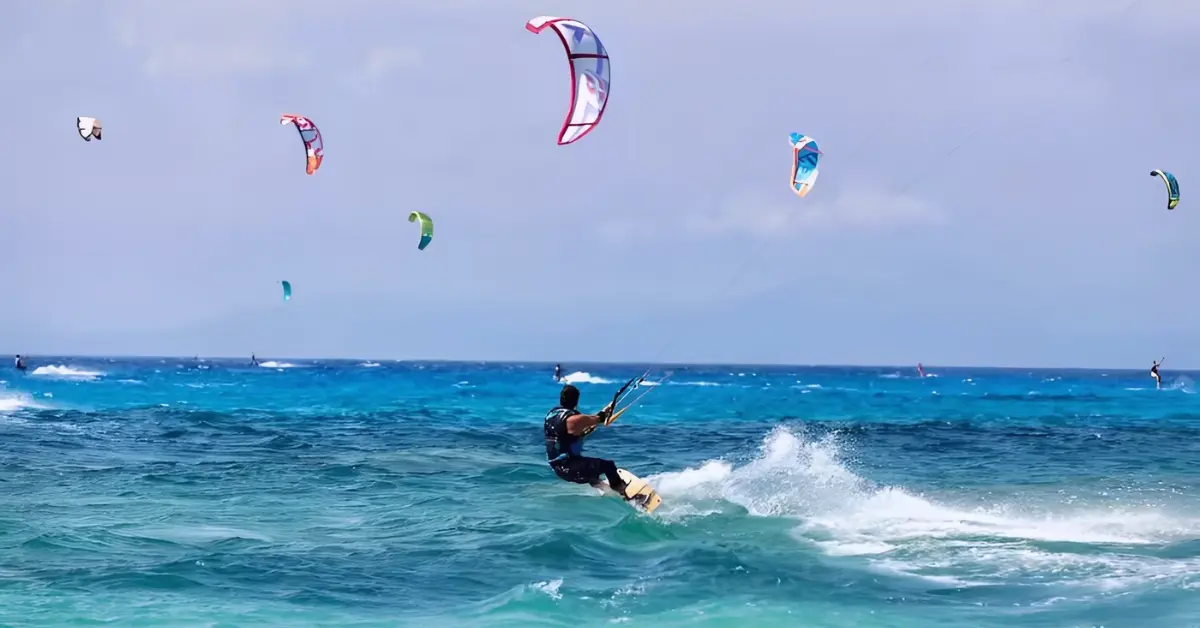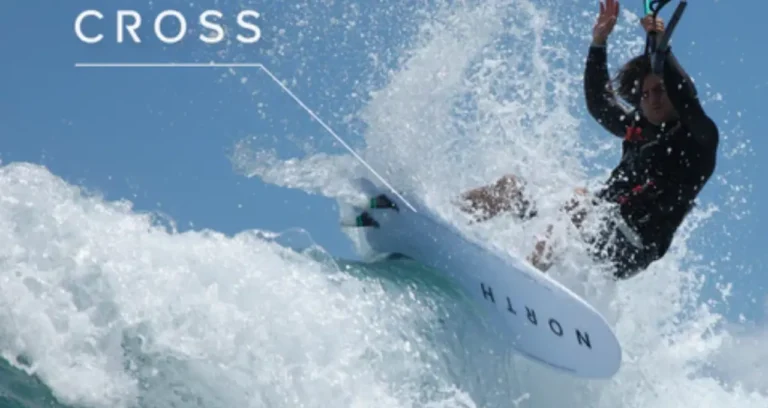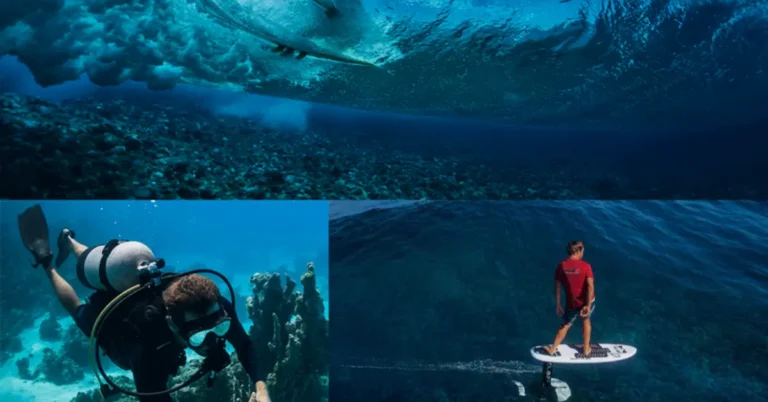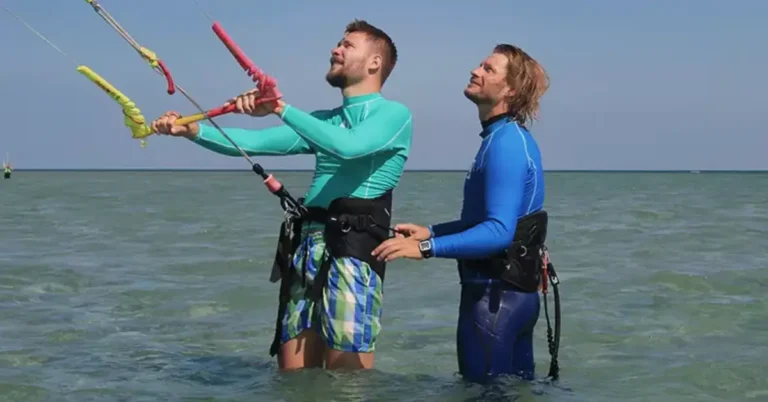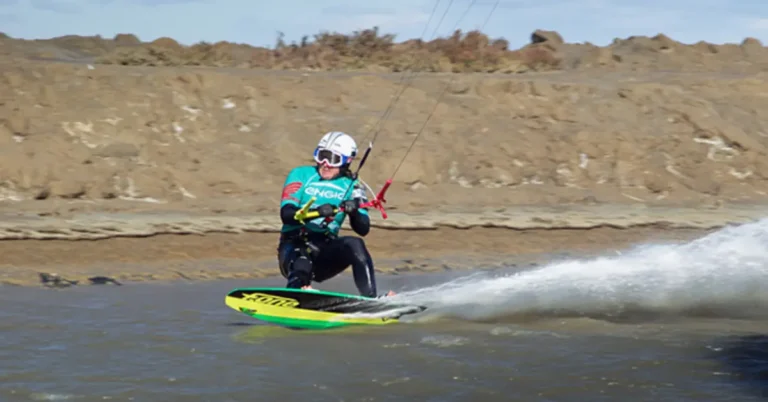Is Kitesurfing a Good Workout?
Kitesurfing offers an intense workout, targeting core muscles, lower back, quads, and calves. Despite not needing high athleticism, its intensity varies with wind, water conditions, and riding style. Compared to other activities, it leans towards muscular rather than aerobic exercise.
Whether it’s for fitness or fun, understanding its workout benefits is essential for enthusiasts. Get ready to dive into the exhilarating world of kitesurfing and discover its impact on your fitness journey.
Also Read: The Five Best-Selling Kitesurfing Kites in 2024
What kind of workout is kitesurfing?
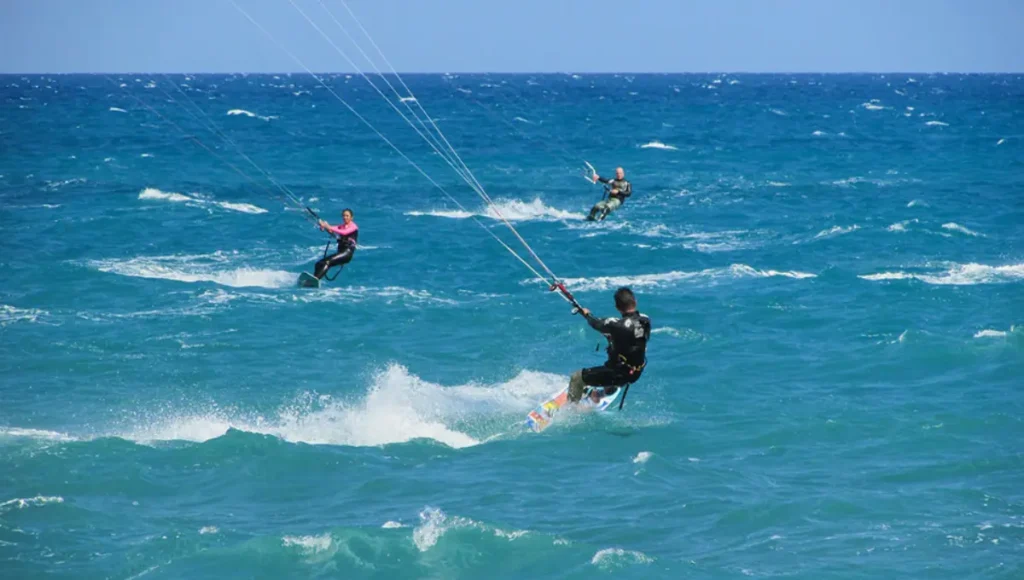
Kitesurfing mainly works your core muscles (abs, lower back, deeper core muscles), and leg muscles (quads, hamstrings, calves). These muscles engage a lot when you carve upwind or pull into your harness, creating tension in your lines. The intensity of the workout depends on your riding time and how much upwind riding you do.
Many kitesurfers feel sore after a session, especially if they’re still building their core muscles. However, it’s not a strong aerobic workout, except for certain riding styles. Less fit individuals can still enjoy kitesurfing after mastering basic techniques, but for cardio, consider other sports.
The workout you get from kitesurfing depends on your level
When you’re learning kitesurfing, you engage your core muscles to position the kiteboard and stay balanced. You may push too hard with your legs during water starts, causing fatigue and soreness afterward. Staring at the kite can strain your neck, and building leg strength may stress your knees.
As you improve, you learn proper techniques, reducing muscle soreness. Riding longer and staying upwind shifts the workout to your glutes, quads, and core muscles for maintaining board control. Mastering skills and relaxing help alleviate tension and soreness during kitesurfing sessions.
Strong conditions mean stronger workout
The intensity of a kitesurfing session depends on weather conditions. Gentle winds and calm waters in the Caribbean make for an easy ride, achievable even for beginners. But strong winds require constant effort, like doing crunches. Your core, back, hips, and legs are heavily engaged, especially in gusty conditions.
Rest breaks are essential to relieve strain, as the continuous pull from the kite is exhausting. Riding in rough water or waves adds to the workout, requiring constant adjustments and squat-like movements. Overpowered kites or challenging conditions also give your heart and lungs a significant workout.
Riding style affects your kitesurfing workout
How you ride in kitesurfing affects your workout. Doing tricks and jumps adds athleticism. Jumping engages the upper abs, forearms (from holding the control bar), thighs, and calves. It also requires deep breathing for muscle and brain function, boosting heart and lung activity. Jumping frequently intensifies the workout, with sessions typically lasting 1-2 hours.
Downwinders, riding with tensioned lines to maintain kite power, work core, and leg muscles intensely, providing a cardio session over long distances. Riding with a powerful kite, doing tricks, jumps, spins, and flips engages more muscles and increases heart rate for a comprehensive workout.
Kitesurfing workout vs other sports
Kitesurfing offers an intense workout, but it requires enough wind and a more athletic riding style for maximum muscle and cardio benefits. Whether it can replace your current workout routine depends on wind availability and personal preference. Strong winds can leave muscles exhausted, making gym workouts challenging.
Despite boredom with gym routines, kitesurfing isn’t a complete replacement for cardio workouts. Cross-training is crucial for strengthening muscles and preventing injuries, particularly in glutes, quads, knees, and lower back. Warming up and stretching before and after sessions is essential for injury prevention and overall well-being. Be cautious to ensure kitesurfing is a positive experience for your body.
What Are The Benefits Of Kitesurfing?
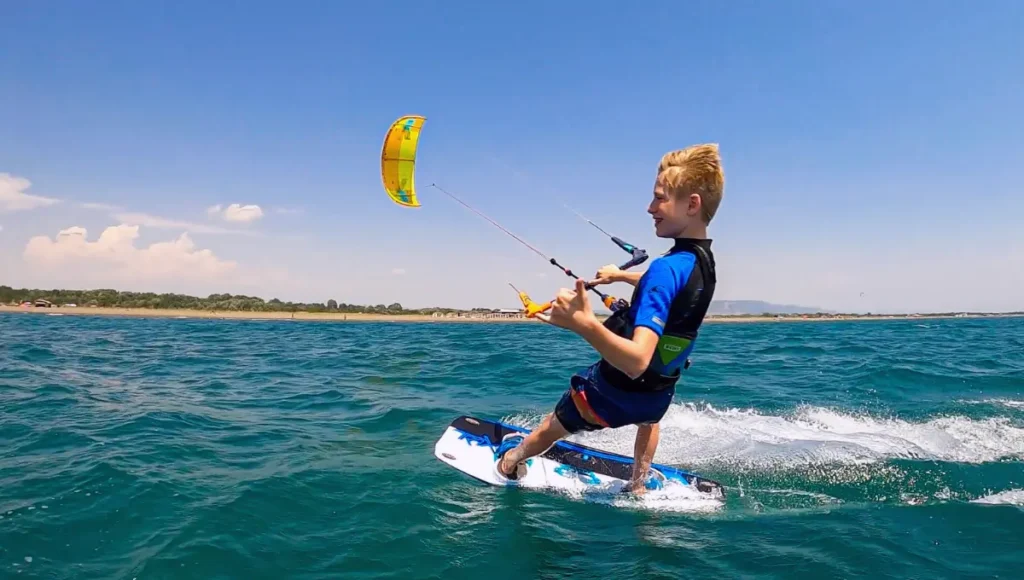
Kitesurfing is an exciting water sport with many physical and mental benefits. It’s a great workout, improving strength, endurance, and coordination, similar to windsurfing and sailing. Controlling the kite requires upper body and core strength, while also providing a good cardiovascular workout. Kitesurfing burns calories, aiding in weight loss.
Mentally, it brings a sense of freedom and excitement, reducing stress. It’s relatively safe with low injury risk and can be enjoyed socially with friends and family. Mastering kitesurfing boosts self-confidence, making it a rewarding and fulfilling activity.
Is Kitesurfing a Good Exercise?
Kitesurfing is an exciting watersport with potential fitness benefits. It helps with staying fit and improving balance, coordination, and strength. Regular practice, along with other activities like running, swimming, and cycling, can enhance your kitesurfing abilities.
This extreme sport combines skills from wakeboarding, windsurfing, surfing, paragliding, and snowboarding, engaging muscles throughout the body. Overall, kitesurfing offers a fun way to exercise and improve overall physical fitness.
What Muscles Does Kitesurfing Work?
Kitesurfing is a popular sport that works various muscles in your body. It mainly targets muscles in your upper body that control the kite’s direction. Additionally, muscles in your lower body are engaged to keep you moving across the water. It’s a full-body workout, involving muscles like quadriceps, hamstrings, glutes, calves, and abs.
Specifically, it works muscles responsible for knee and hip movements, as well as those involved in balance and stability. Overall, kitesurfing offers a fun way to exercise and strengthen your entire body.
Frequently Asked Questions
Conclusion
Kitesurfing offers varying levels of intensity, from relaxed to athletic, providing a full-body workout similar to fast walking or even more intense sessions with tricks and rough water conditions. Sustained upwind riding and long-distance carving can also contribute to muscle strength and calorie burning, leading to weight loss for beginners.
Cross-training is crucial to prevent injuries, especially in the lower back, caused by repetitive strain and posture constraints. Incorporating other exercises alongside kitesurfing helps maintain overall fitness and reduce the risk of injury.
